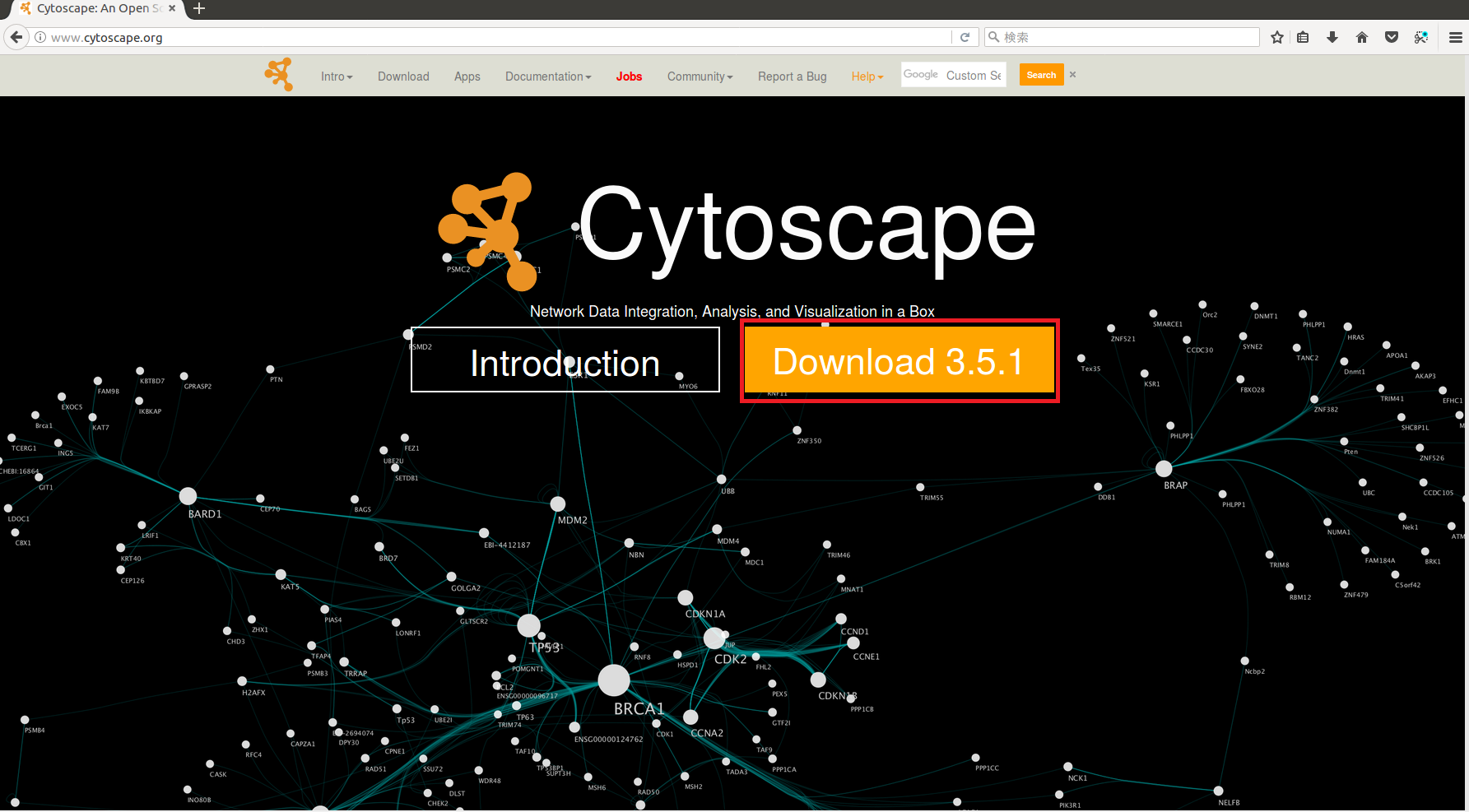

Step 6: Go to plug in menu, choose the option "Network Analysis", followed by choose "Analyze network". Step 5: Once the network is loaded, change it into preferred layout.įigure 3: Screen shot to manage with layouts Step 4: Import the network into the cytoscape, by the standard menu "File" option as shown below.įigure 2: Screenshot to import network files
#INSTALL CYTOSCAPE 2.8 DOWNLOAD#
One can download the network from external databases or can also import the network directly from the web services. Step 3: Go to the required pathway database exaple IntAct, download the network in a suitable format like sif, sbml, xml, etc. Go to plug-in options in the standard menu bar, check whether the network analyzer is installed or not, if not go to manage plug in and search for Network analyzer and install.įigure 1: Screenshot of Cytoscape and to manage plugin menu Step 2: Launch cytoscape, make sure that you have internet in your computer.

#INSTALL CYTOSCAPE 2.8 SIMULATOR#
Please go to simulator tab for detailed information about instalation.
#INSTALL CYTOSCAPE 2.8 INSTALL#
Step1: Download and install cytoscape in your computer. Our results demonstrate how multiple molecular interaction types can be integrated toward a global wiring diagram of the cell, and they provide insights into the evolutionary dynamics of protein complex regulation.Follow the steps given to analyse the network and feature detection Analyses of these conserved complexes revealed different conservation levels of their regulators and provided suggestive evidence that protein-protein interaction networks may evolve more slowly than transcriptional interaction networks. Furthermore, we extended our framework to a cross-species setting, identifying 24 coregulated complexes that were conserved between yeast and fly. Several predictions were tested by new microarray profiles, yielding a confirmation rate (58%) comparable with that of direct immunoprecipitation experiments. This framework identified 72 putative coregulated complexes in yeast and allowed the prediction of 120 previously uncharacterized transcriptional interactions. To investigate the functional interplay between these two interaction types, we combined both within a probabilistic framework that models the cell as a network of transcription factors regulating protein complexes. Separately, systematic chromatin immunoprecipitation experiments have enabled the assembly of large networks of transcriptional regulatory interactions. Yeast two-hybrid and coimmunoprecipitation experiments have defined large-scale protein-protein interaction networks for many model species.

They also suggest that modeling intrinsic variation in network attributes may be important for understanding the way genes affect human behaviors and the way these behaviors spread from person to person. These results suggest that natural selection may have played a role in the evolution of social networks. We show that the model is well suited to real social networks in humans. We propose an alternative "Attract and Introduce" model with two simple forms of heterogeneity that generates significant heritability and other important network features. We then develop a "mirror network" method to test extant network models and show that none account for observed genetic variation in human social networks. Here, we show that 3 of these attributes (in-degree, transitivity, and centrality) are heritable. Although genetic variation accounts for a significant portion of the variation in many complex social behaviors, the heritability of egocentric social network attributes is unknown. Social networks exhibit strikingly systematic patterns across a wide range of human contexts.


 0 kommentar(er)
0 kommentar(er)
